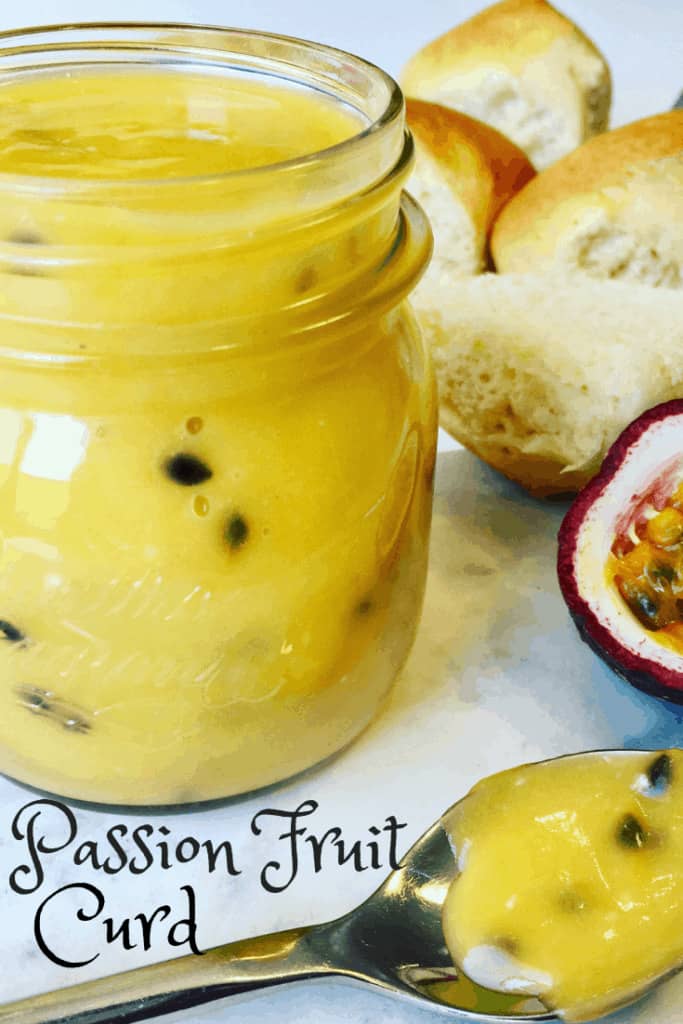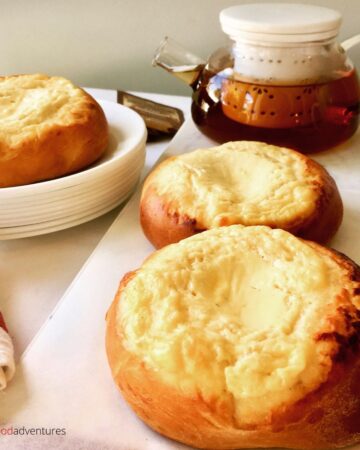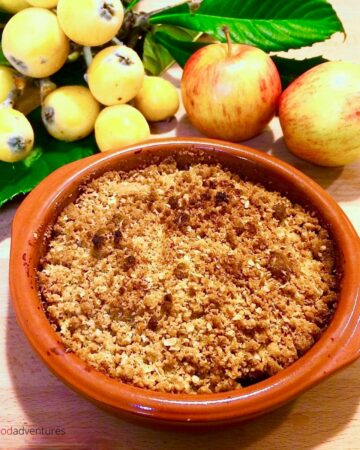Passionfruit Curd or sometimes known as Passionfruit Butter elevates your dessert with a tropical zing! The sweet and tart flavor of passionfruit, silky, sweet with a bit of tang, will blow your tastebuds away. And the best part is that it's so easy to make.
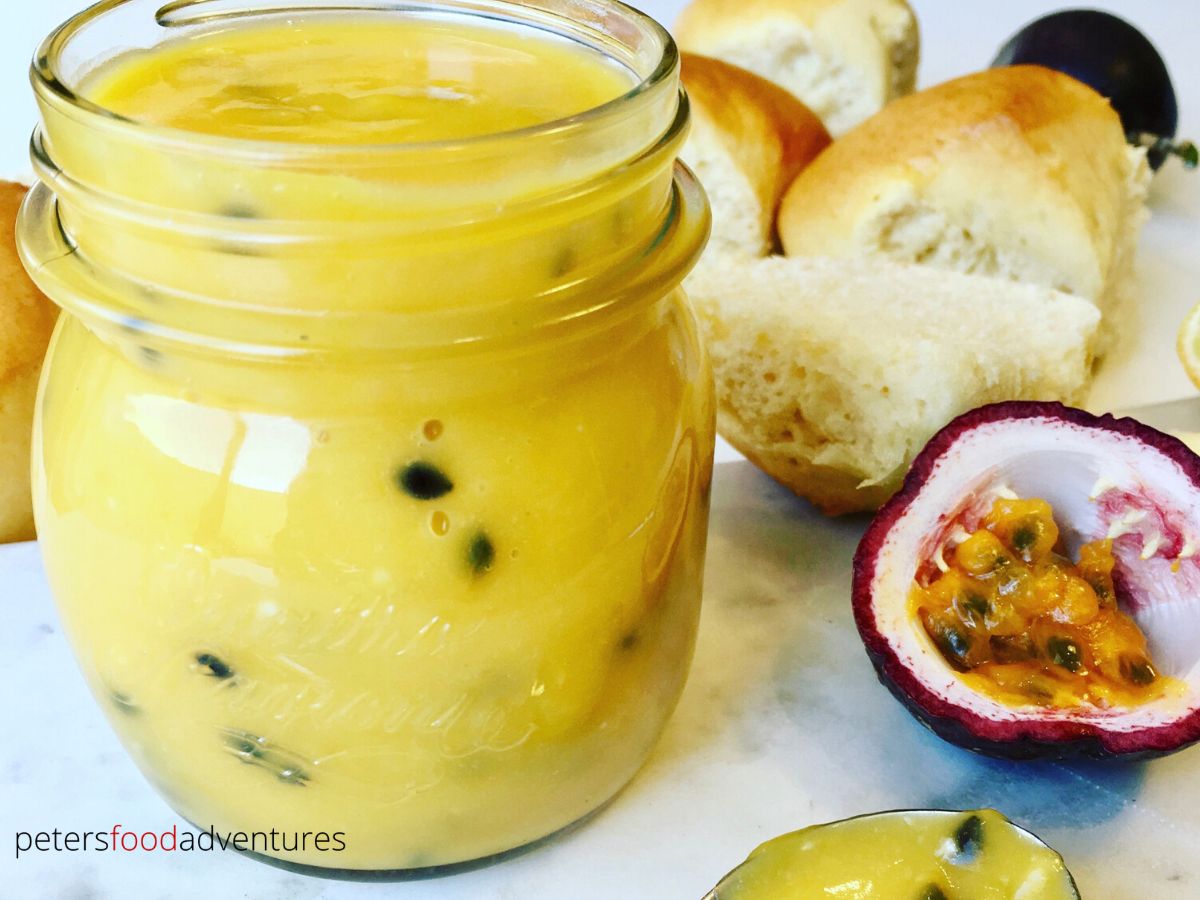
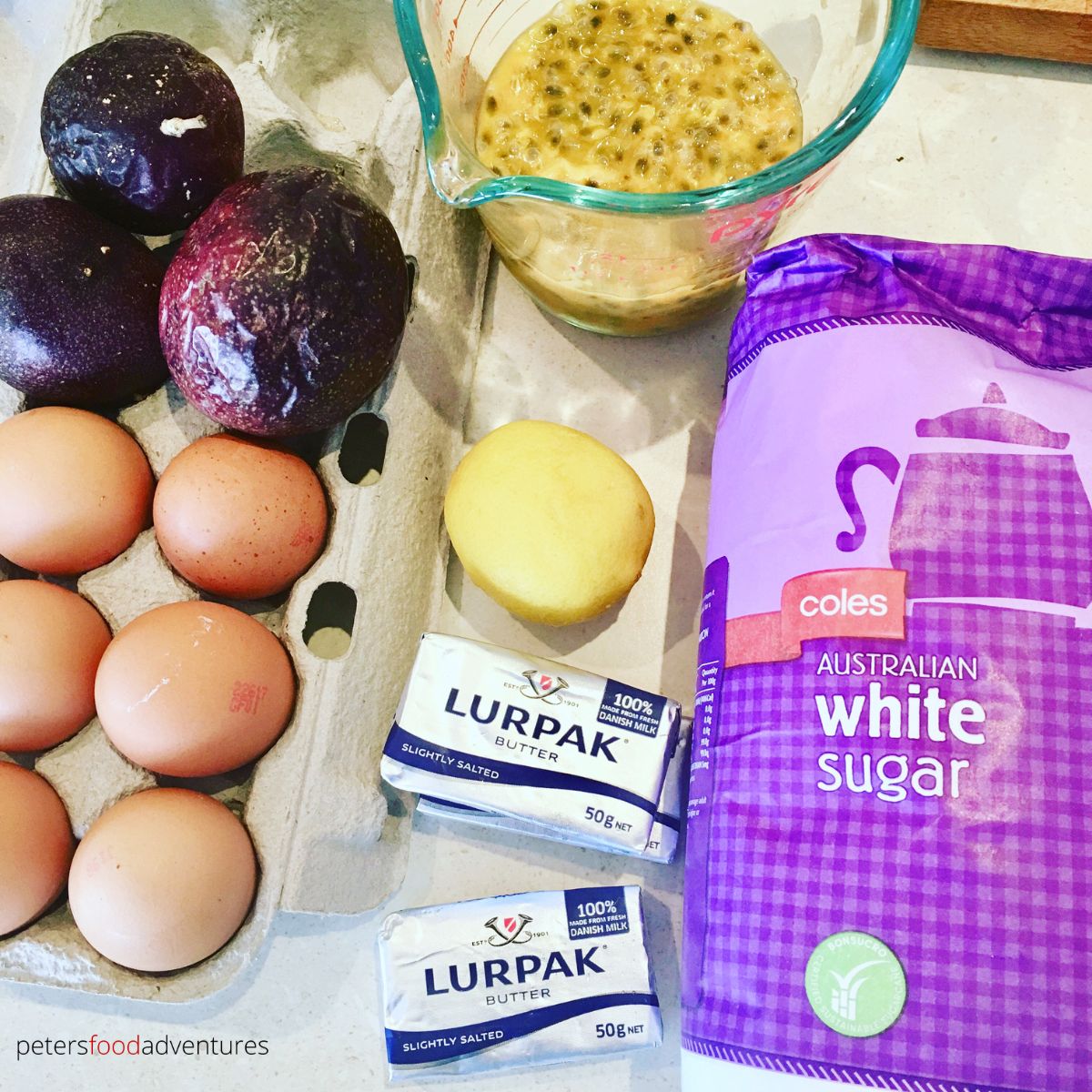
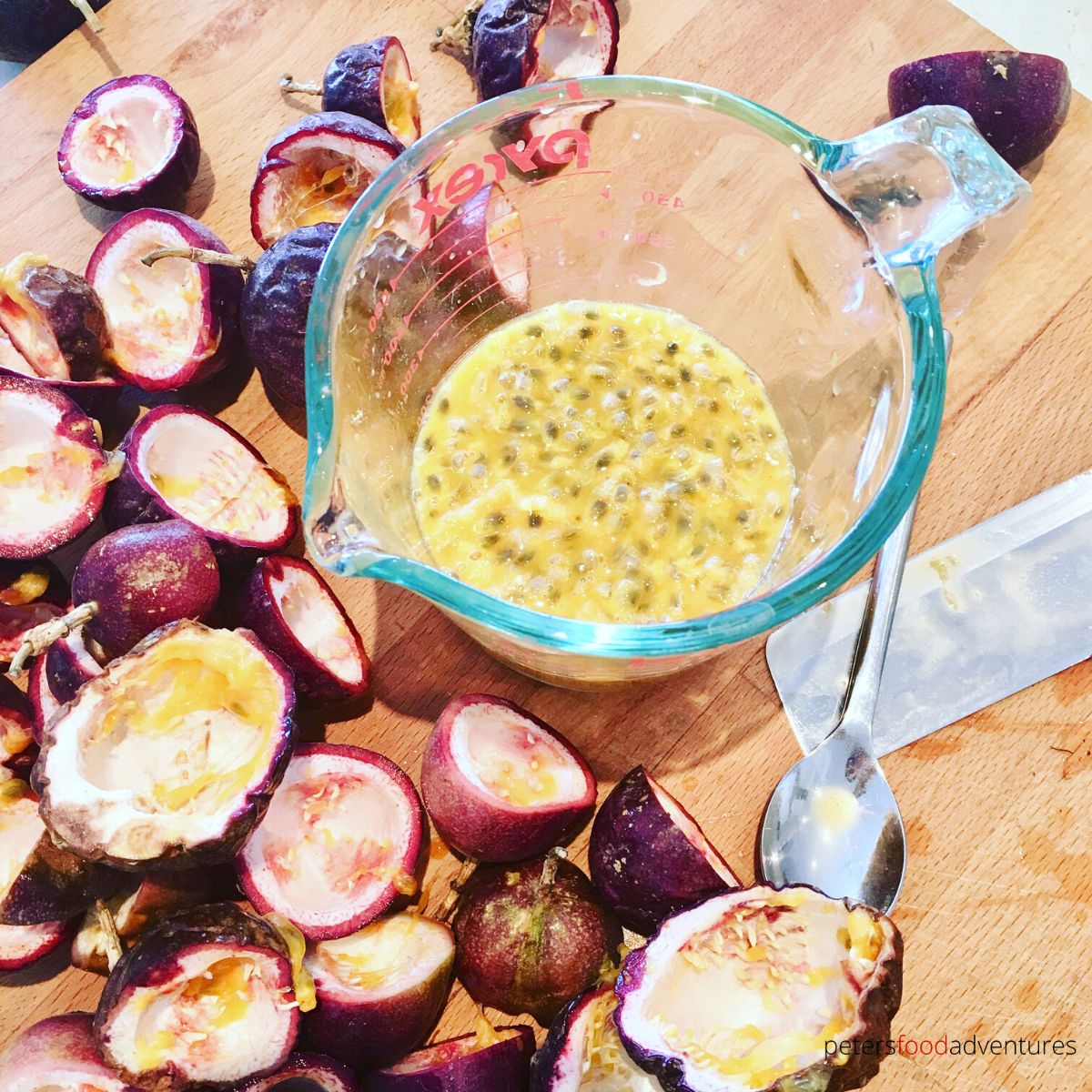
If you have a passionfruit vine growing in your yard, you are probably overwhelmed with fresh passionfruit. Depending where you live, passionfruit can be in season year round! Fresh ripe passionfruit, eggs, sugar and butter, heated and whisked to perfection.
Why You'll Love This Recipe
- Easy - only takes about 20 minutes to make
- No Double Boiler - an easy method with minimal mess
- Versatile - so many ways to use this sweet tropical curd
- Tasty - You'll love the Passionfruit flavor enveloped in the sweet custardy silkiness
Ingredients You'll Need
- Fresh Passionfruit Pulp - Passionfruit varies in size, can use up to 15-20 Passionfruits
- Eggs and Egg Yolks - I use medium eggs and yolks in the recipe
- Sugar - caster sugar is best, but white sugar works too!
- Lemon Juice - or can also use lemon zest for a bit of tang
- Butter - I used regular salted butter, but unsalted is recommended
What is Passionfruit Curd Used For?
There are many different type of fruit curds out there, most commonly made with citrus fruit like lemons, oranges and limes. Any fruit curd can be used for these ideas.
- Australian Scones topped with Cream and Curd
- Topping for a Spongecake or Angel Food Cake
- Spread over toast or crumpets for breakfast
- Layer it on your Pavlova or part of a Pavlova Trifle
- Fill tart shells for a tropical treat
- Spread of Crepes or Blinis
- Enjoy with vanilla ice cream
- Generously spread over Buttermilk Pancakes or Waffles
- Use as a sweet dip for your Dessert Board
- Spoon alongside Granola and Greek Yogurt
- Eat by the spoonful with a cup of tea!
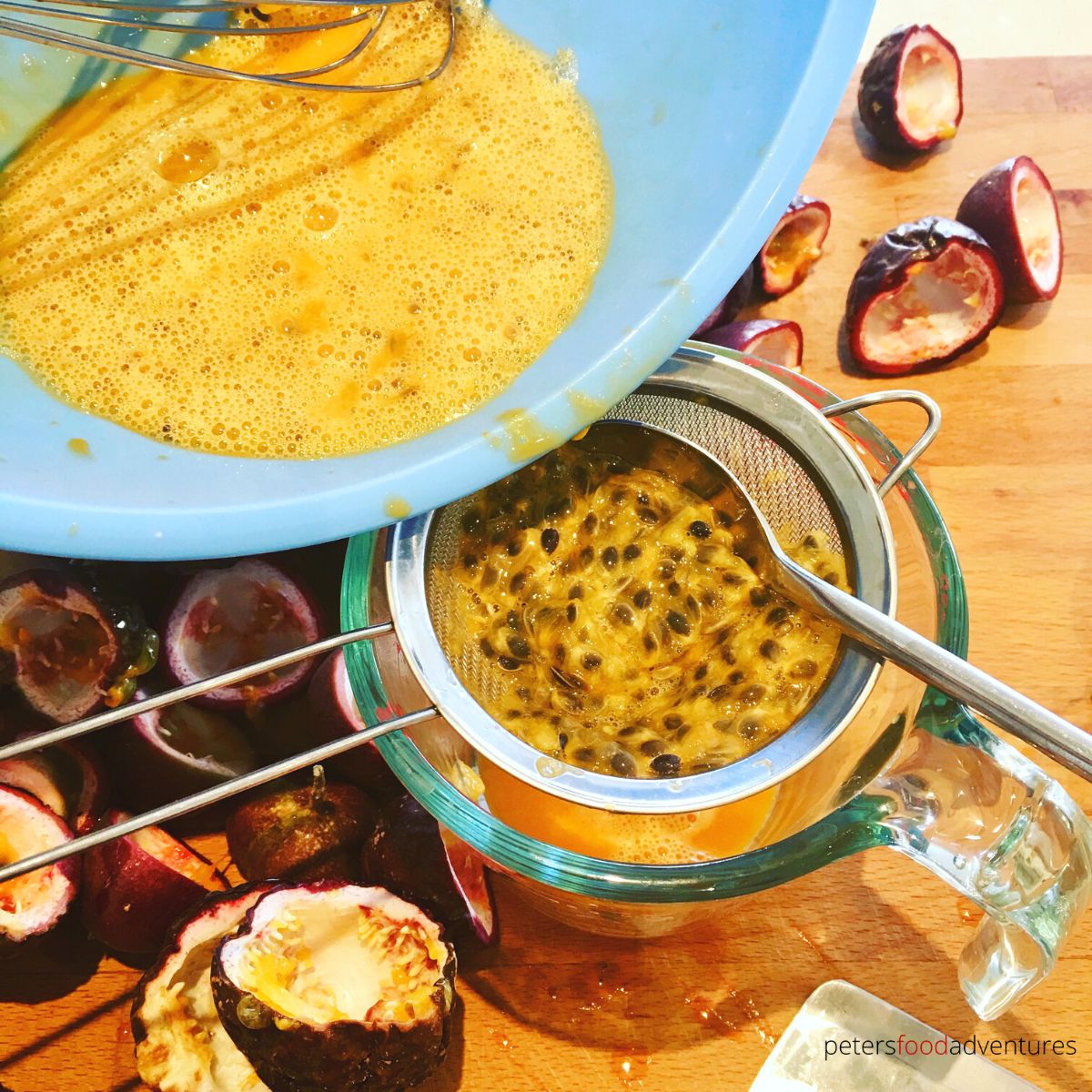
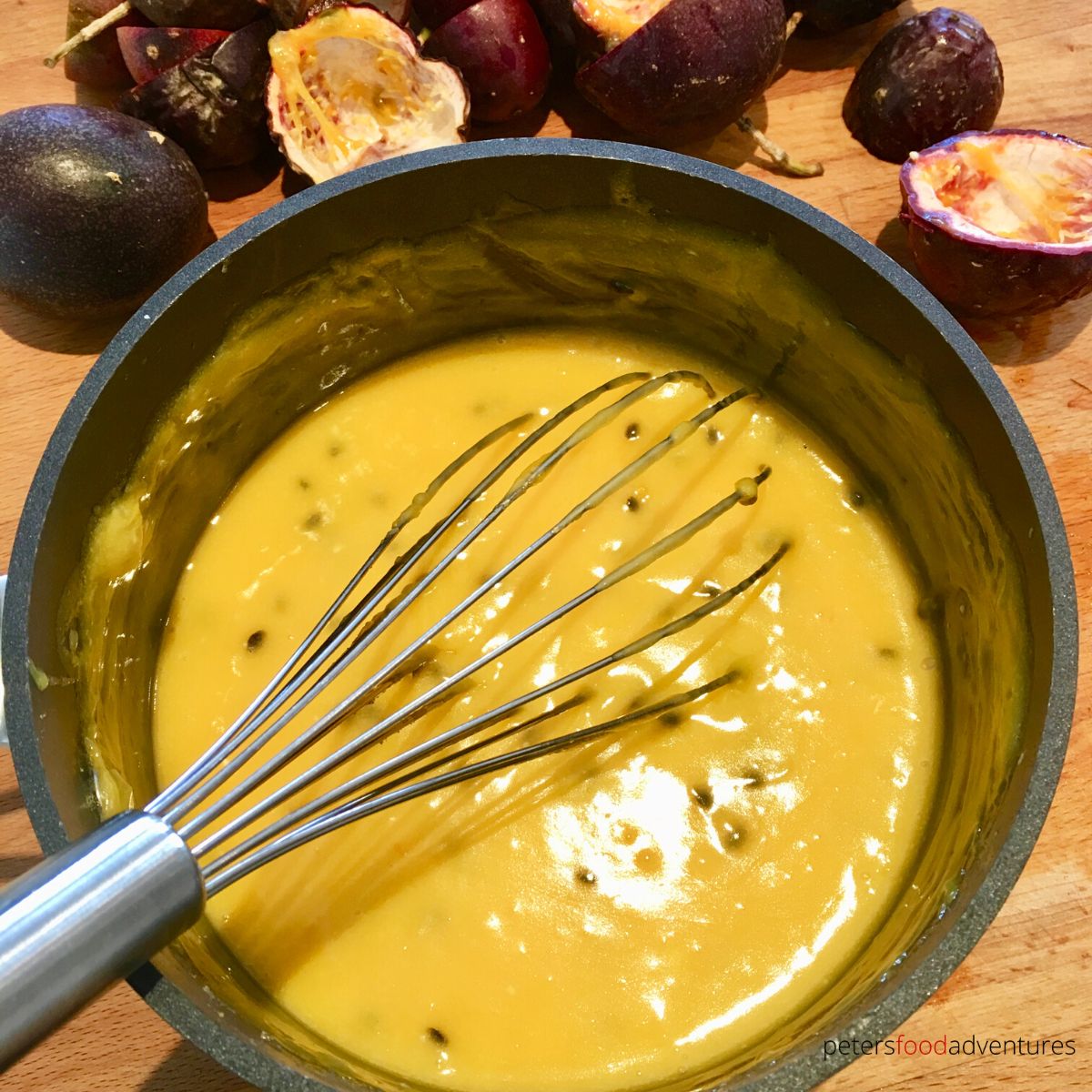
How to make Passionfruit Curd
The basic way of making fruit curds is to cook the eggs, juice, sugar and butter until they are whisked smooth. The danger is to overcook the eggs by not constantly whisking on low heat. If the eggs cook incorrectly, you get a strange mix of scrambled egg and passion fruit curd, which no one wants to eat!
- Prepare - Whisk passionfruit in a small bowl to break apart the membrane. Strain through sieve and keep ½ of the seeds to add into pulp.
- Whisk - Place eggs, sugar, egg yolks, passionfruit pulp and lemon juice in a non reactive saucepan. Whisk until combined.
- Heat - Over medium low heat, stir constantly until the sugar has dissolved. Slow add cubes of butter, allow to melt before adding more.
- Constantly Stir - reduce heat to low, keep stirring until curd thickens.
- Cool - Allow to cool before keeping refrigerated.
Recipe Tips and FAQs
- Heavy Non-Reactive Saucepan - essential when cooking with acidic foods, use stainless steel, glass or ceramic, avoid cast iron or aluminum.
- Frozen Passionfruit - freeze fresh passionfruit pulp to re-use when needed
- Stir Constantly - constant stirring is needed, don't walk away for even a second, to ensure the ingredients emulsify together without curdling
- Canned Passionfruit - Unfortunately this doesn't work as it's too watery, stick to fresh fruit
- Strain It - use a sieve to strain all the passionfruit seeds from the recipe, but for me it's not passionfruit curd without the crunchy seeds. Also can use a sieve to salvage the curd if egg ribbons that may have curdled during cooking process
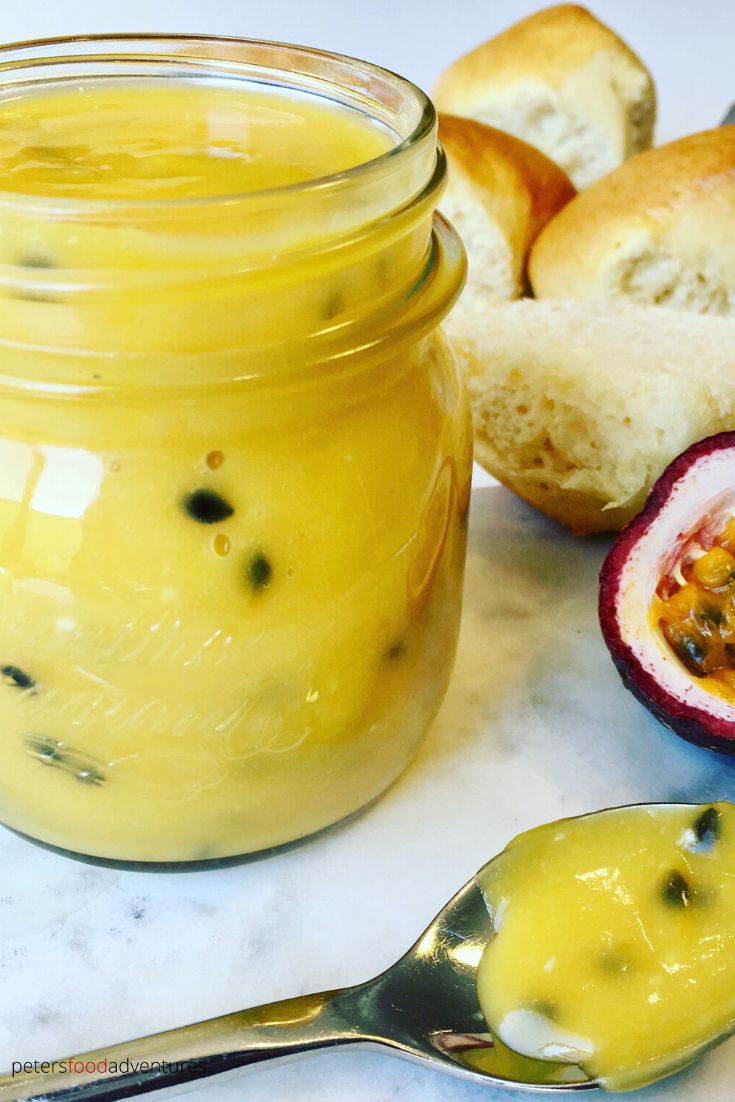
How Do I Know Passionfruit Curd is Ready?
Passionfruit Curd is ready when it is thick enough to coat the back of a spoon without dripping off. More specifically, if you coat your spoon, and use your finger to draw a line across the back of the spoon. The line should hold and not drip, then the right consistency is reached. The optimal temperature range for this thickness is 60°C/140°F - 75°C/170°F.
Scrambled Danger
The biggest risk to ruining any curd is heating the eggs too quickly which results in ribbons of egg through your curd. Constantly stir over low heat, keeping curd moving until combined and heated through.
It only takes one second of heating too fast without stirring to ruin your curd. If the curd is lumpy, you can strain it through a sieve to try to salvage it.
Storing Passionfruit Curd
Refrigerator - homemade Passionfruit Curd must be refrigerated at all times. I usually keep it in the fridge for a few weeks, but no longer than that.
Freezer - yes, you can freeze fruit curds! Place in an airtight container and freezer for up to 12 months. Defrost in the fridge for 24 hours before using.
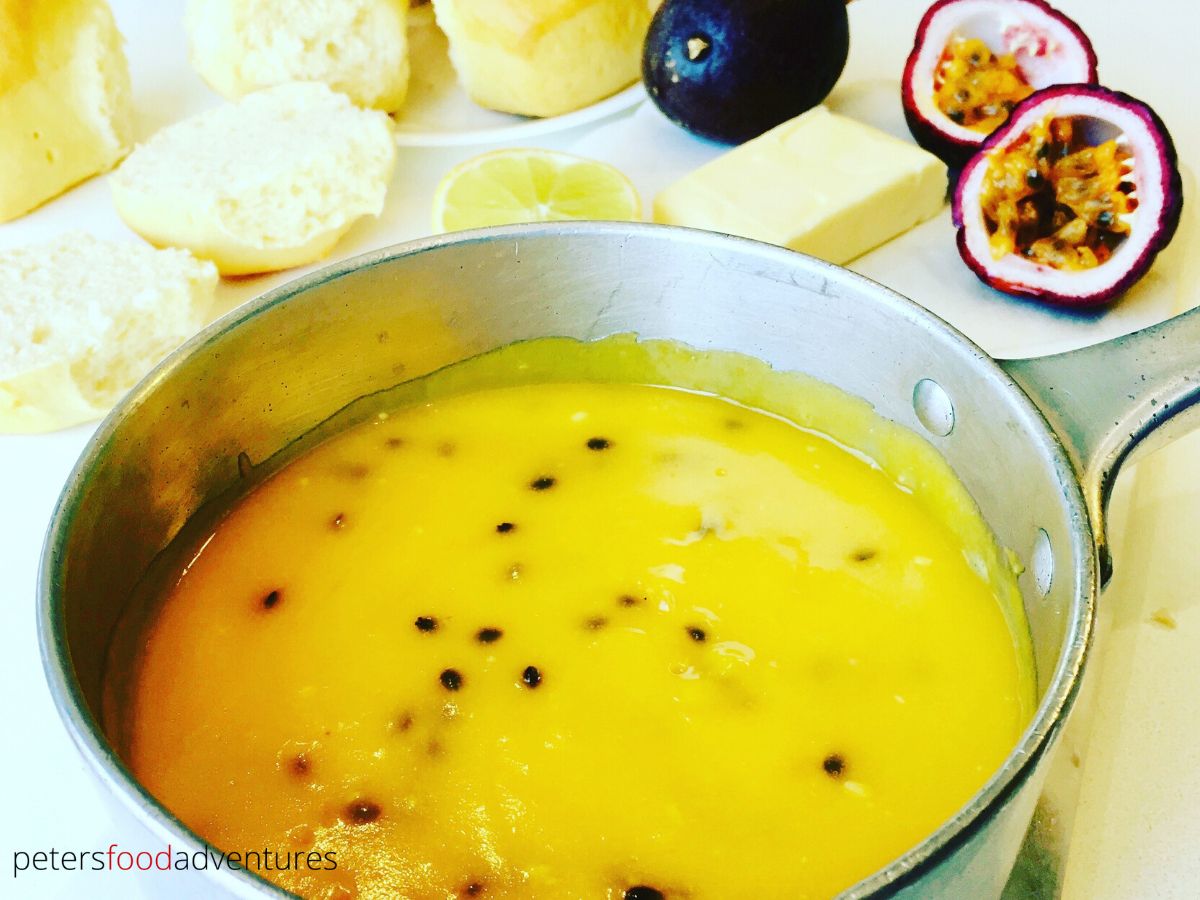
There are many different type of fruit curds out there, most commonly made with citrus fruit but this ones my favorite! This silky and smooth, this recipe is delicious and easy to make. Fresh ripe passionfruit, eggs, sugar and butter, heated and whisked to perfection. You'll want to make this passionfruit recipe again and again. Bon Appetit! Приятного аппетита!
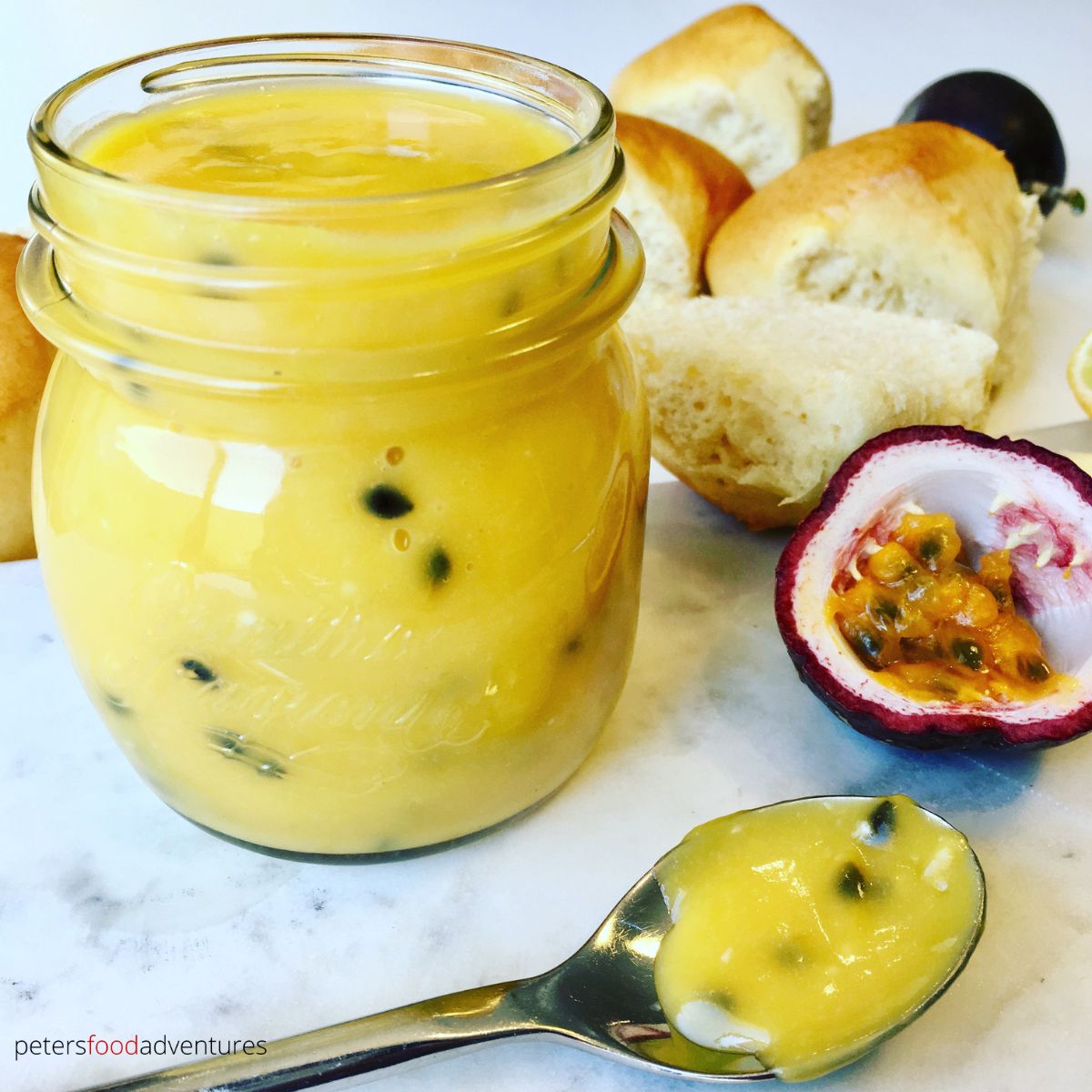
Equipment
- 1 Sieve (optional)
Ingredients
- 4 eggs lightly beaten
- 3 egg yolks lightly beaten
- 1 cup passionfruit pulp with seeds
- 1 cup sugar
- 1 tablespoon lemon juice
- ½ cup butter cubed
Instructions
Preparation
- Take the passionfruit pulp into a small bowl, using a whisk, beat it to break apart the passionfruit membrane. Strain the passionfruit pulp using a sieve, and keep about half the seeds to be added into your pulp.
- Cube butter, set aside.
Making Passionfruit Curd
- In a saucepan, place eggs, sugar, egg yolks, passionfruit pulp and lemon juice.
- Whisk together until combined. Over medium low heat, stir constantly until the sugar has dissolved.
- Constantly stirring, slowly add cubes of butter, melting before adding more.
- Reduce heat to low, keep stirring and cooking until the passionfruit curd thickens and easily coats back of a spoon. This may take 10 minutes depending on the heat.
- Allow to cool and keep refrigerated.
©PetersFoodAdventures.com *originally published February 2018, updated January 2023

